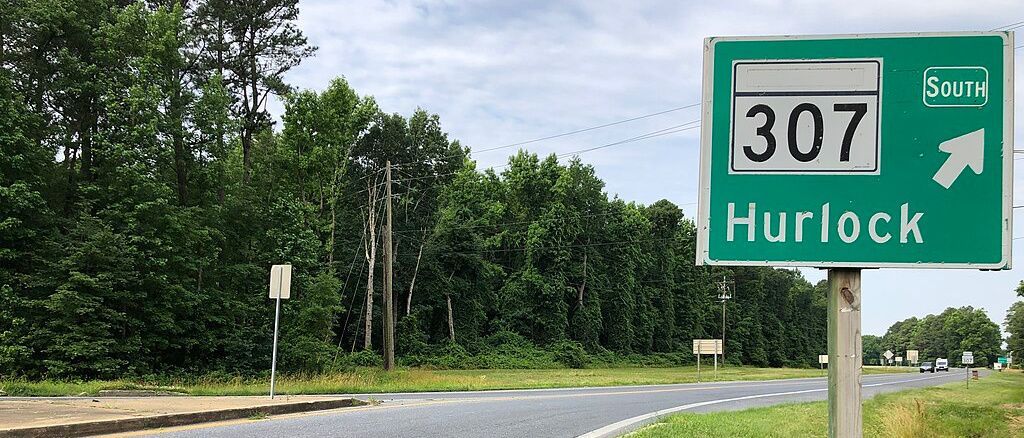Dealing with Homelessness on the Eastern Shore and in Delaware, Part 2

Part 1 of this series dealt with homelessness in Kent County, Md., and how a group of citizens is dealing with it. This article examines how Salisbury, in Wicomico County, and Georgetown, in Sussex County, Del., are tackling homelessness.
The City of Salisbury recently finished building Anne Street Village, a transitional housing community for homeless residents. The village has 23 units, a personal hygiene facility, and wellness center, with the latter giving residents physical and mental health care as well as addictions counseling. The village is made up of small houses which include a bed, HVAC unit, a refrigerator, and other amenities to help the resident to feel at home.
Each Anne Street Village resident has a case manager who helps develop skills for daily living as well as for developing a savings account to move toward permanent housing, hopefully within 12 months. According to the Salisbury Daily Times, “providing an individual with permanent, supportive housing averages around $3,500, including first month’s rent and security deposit, furniture, home goods and groceries.” The same article quoted Ron Strickler, Salisbury’s director of housing and community development, who said, “Salisbury is the smallest city in America with a permanent supportive housing program, and we’re very proud of that achievement.”
To help fund operations of Anne Street Village, the city has created the Anne Street Village Sponsorship Program in partnership with the Community Foundation of the Eastern Shore. Anyone interested in learning more about the Village and the sponsorship program should visit the website.
In addition to Anne Street Village, other groups in Salisbury provide services to the homeless. One of these is the Christian Shelter, which began in 1980 and which over the years has provided shelter for more than 28,400 persons and served more than 500,000 meals. It is a temporary emergency shelter “providing safe housing and meals for men, women, and children who are homeless.” In addition to food and shelter, residents receive employment counseling and financial assistance.
Another religious-based organization offering services to the homeless in Salisbury is HALO Ministries. They have been working with the homeless since 2007. HALO is an acronym for Hope and Life Outreach. They provide shelter and meals. They also have a program for children and youth.
Moving on to Delaware, Georgetown provides support for the homeless in what is called the “Pallet Village.” This consists of 40 cabins, which currently are home for 46 individuals. The village resulted from the efforts of the Springboard Collaborative together with First State Community Action Agency.

Started in 2020 by a group of community advocates, Springboard is a nonprofit shelter and housing developer for homeless people. It is funded by grants from the WSFS CARE Foundation and others that provide operating funds and funds for outreach efforts. Georgetown passed an ordinance that made it possible for the program to begin and provided a $500,000 grant with funds from the American Recovery Plan Act to purchase the cabins.
Pallet Village’s cabins came from Pallet Shelter in Washington, a public benefit corporation devoted to ending unsheltered homelessness and giving people a fair chance at employment. The cabins were set up by volunteers on property belonging to the First State Community Action Agency. They include HVAC and are eight feet apart. Judsone Malone, executive director of Springboard, recently stated for WHYY public radio that after only two weeks of occupancy, they have seen a transformation among residents. “We’re finding some really significant progress in terms of people who now want to get off their dependencies and go through a detox or they want to work on their goals.”
The program is supported by La Red, Beebe Hospital, Brandywine Bright View, and the Department of Health and Social Services. Beebe brings a mobile unit to the site twice a month to provide medical care and the Dept. of Health and Social Service’s Mental Health Division has screened most of the residents. Springboard provides restrooms and showers, offices for mental health and addiction services, job training, and vocational rehab.
Each resident is asked to establish a set of goals during the intake process. These can include finding a job and documenting substance abuse treatment. Malone said that after three months, residents “should be on a path to self-sufficiency and finding permanent housing.” Meanwhile, they are provided with meals. The village has a store which carries products that are offered free to residents.
Eastern Shore communities are dealing with homelessness differently. Salisbury’s Anne Street Village seems to be the only instance where local government acted to attack the problem, although now they are seeking donations from local citizens and organizations. In addition, two religious organizations served the homeless in Salisbury for years before local government stepped up. In Georgetown, the Pallet Village was the result of action by local organizations, with input from public funding after the fact. In Chestertown, Md., help for the homeless has resulted from local citizens who organized to find ways to help. Clearly homelessness is an issue on the Eastern Shore and more needs to be done to eradicate it.
A native of Wicomico County, George Shivers holds a doctorate from the University of Maryland and taught in the Foreign Language Dept. of Washington College for 38 years before retiring in 2007. He is also very interested in the history and culture of the Eastern Shore, African American history in particular.
Common Sense for the Eastern Shore







